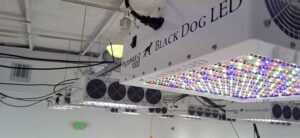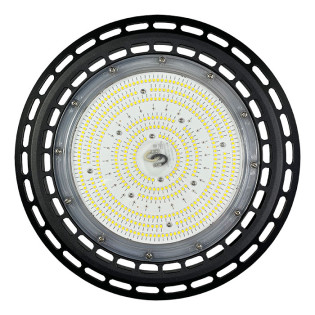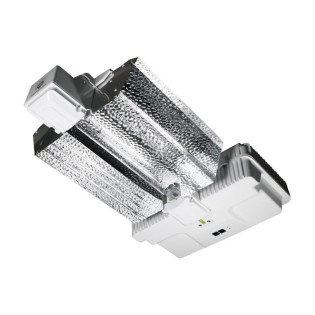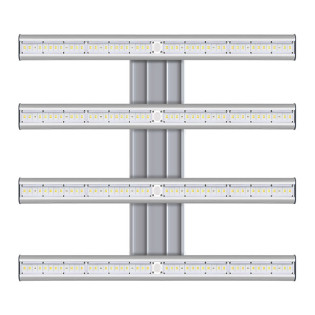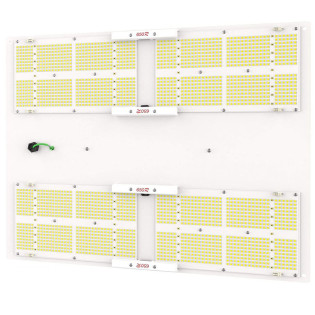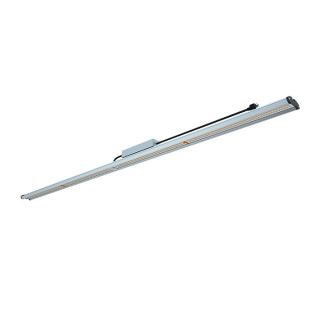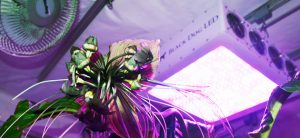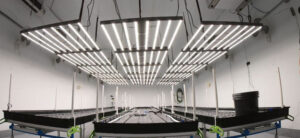
To grow the biggest, strongest plants possible, you need to put together the ultimate grow light setup.
It may appear to be common sense that the better your grow lights, the better your plants will turn out.
However, it’s not that as simple as finding the most expensive light and throwing it in your tent.
We first need to define what the "best grow light setup" is. Then, you need to understand what this means in respect to your grow in particular.
How To Choose The Best Grow Light Setup
Your ideal grow lighting system will depend on many variables:
- What your goals are as a grower - do you want huge plants with heavy yields, or a small, easy to manage closet grow?
- Your grow space - you will have far more options in an 8' x 8' space than a 2' x 2'. Similarly, the area you're growing in will affect what type of grow light setup is best for you.
- How many plants you want to fit in that space - the grow light setup for 4 plants in an 8' x 8' space would be way different than for 12-16 plants in that same space.
- Your budget for grow lighting - If you have a bigger budget, you can get more creative with your grow light setup.
If you don’t know the answer to these questions, you are likely at the very beginning of your grow.
We recommend you check out our post on grow room design - it will help you hone in on exactly how you want your grow room to look.
Once you know where you’ll be growing, with what number of plants, and how much space you have, you can begin to calculate the size of the footprint you need.
Understanding light footprint and how it affects plant growth

Understanding the concept of light footprints is the first step in determining how you are going to setup your grow lighting.
This is a fairly simple concept that can be made more complicated than it needs to be. Here is all you need to know:
Grow lights hung over your plants create a square or rectangular “footprint” of light. This footprint will be determined by how powerful the light is, and how high it is hung.
Number of grow lights and spacing affects footprint
Each light will have its own footprint, but if you have multiple grow lights, you'll need to take that into account as well, as there will be some level of overlap. You also need to understand optimal spacing between lights.

For example, the image above depicts the canopy of grow lights spaced 5' apart. As you can see, there is a minimal level of overlap. This grow light setup is probably not going to get you the most bang for your buck.

On the other hand, this grow light setup consists of lights spaced only 3' apart. You can see much more overlap there is, and while this increases canopy coverage, it may be too much. More is not always better when it comes to lighting, as this could lead to bleaching or burning your plants.

Now, look at the setup above - it features four grow lights spaced four feet apart. The light uniformity of this grow light setup is the most ideal of the three, because light is able to reach lower areas of the plants that typically may not get any. Spacing your lights 4' apart will usually be a good benchmark to shoot for, but variances in wattage, size, and footprint will dictate what works best for you.

Your grow light setup needs to adequately cover your canopy!
Making sure your grow light produces an adequate footprint for your growing space is super important. In fact, you could argue it will make or break your grow.
If your grow light is too small, your plants will never reach their potential, and will likely be a disappointment.
If your light is too big, it can produce excess heat, waste electricity, and worst of all - bleach or burn your plants. So no, more is not always better.
If you want to learn more about the distance between your light and your plants, and how to actually get your light up and running, check out our article on hanging your grow lights.
Sizing your grow light
Let’s say you are growing in a 4’ x 4’ grow tent, and want to figure out what size grow light you need.
You may think it is as simple as saying you want a 4’ x 4’ light footprint, but there is actually more to it. There is a relationship between light intensity and distance hung.
The intensity of light your plants actually receive (ppfd) is more concentrated over the center of the footprint, and diminishes at the edges. LED grow lights like Black Dog LED try to remain as even as possible throughout the footprint, but some loss is inevitable.
As you move the light lower (closer to your canopy) the footprint diminishes, but intensity rises.
The opposite is true as you raise your light up, farther from the canopy. You can learn more about measuring your grow light's effectiveness here to help you find the right distance to hang it.
Different types of grow light setups
Once you have an idea of the type of space you want to grow in, and understand how your plant count factors into your footprint, it is just a matter of researching different grow lights that work for your space.
The setup you choose will affect both your ventilation setup and your grow room environment. There are really an endless number of setups you can choose from, but we will cover the most common.
Single light setup

For beginner growers, the most common approach is a single light setup. You will use just one grow light to cover the footprint of your growing space, which is ideal considering the lower number of plants you are likely growing.
This style of growing works best in smaller grow tents and closets. You should use a full-spectrum grow light to give your plants the specific types of light they like for veg and flower, respectively.
This is a great place for you to start, because you can always just add more later.
Multiple light setup

If you are an experienced grower or have a larger growing space, you will inevitably need more than just one grow light. For example, a 4’ x 8’ grow tent will need at least two grow lights, each able to cover a 4’ x 4’ area.
If you are using multiple lights in the same grow space, they don’t necessarily have to be the exact same. It can be fun to experiment with different lighting types, such as LED and CMH, to see which grows bigger buds for you.
If you have a perpetual grow, where you have vegging and flowering plants in your grow room at the same time, you will definitely use a multiple light setup, but they should definitely be different lights.
Here, it makes sense to use a veg specific grow light for your veg chamber, and a flowering spectrum for your flower chamber. You may even have a fluorescent grow light for your clones!
Combining Lighting Spectrums
You probably know already that different colors of light illicit different reactions in plant. Red light is best during flowering, blue light is best during vegging.
But, choosing the best grow light setup isn't as simple as using one light temp or color during each phase. The sun is as good a lighting source as plants can get, and it offers a full spectrum. So, we should try and replicate this in our grow rooms.
If you are a serious grower and space allows, this means you may be able to combine technologies, such as MH and LED's. Or, you can just find a grow light with a full spectrum.
Supplemental lighting
The best grow light setup includes supplemental lighting for your plants. With this style, you will have your standard grow light over your plants canopy, but you will also have small bar lights hung on the sides of your wall or tent to hit areas that otherwise don’t get light.
Think about how plants grow naturally outdoors. The sun starts on one side of them, and ends on the other side, spreading it’s light across the plant from different angles.
One way to replicate and automate this indoors is with grow light movers, which are awesome. But, they aren’t always feasible for hobby growers, and using supplemental lighting is just easier.
LED bar lights are the most common form of supplemental lighting, and can add unique spectrums your main light might not have.
It will help fill out your plant and ensure you are producing buds from other parts besides the giant colas at top.
Final thoughts on grow light setups
The only way to identify your ideal grow light setup is to know your goals as a grower, the space you have to work with, and your budget.
Fortunately, we carry a huge selection of grow lights here at Hydrobuilder.com, so you can find exactly what you need and start growing indoors.
If you want more help putting together your grow room, reach out to us at and our expert would be happy to help you!
If you want to learn more about which grow lighting technology is best for you, check out our guide on choosing a grow light.





